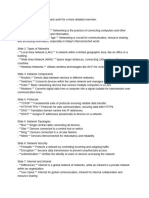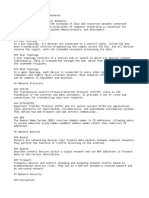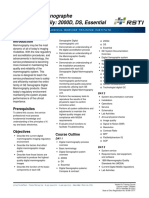0% found this document useful (0 votes)
114 views2 pages# Introduction To Networking Basics
The document provides an introduction to networking, covering its definition, types of networks (LAN, WAN, MAN, PAN), and essential devices (router, switch, modem, access point). It discusses networking protocols, IP addressing, the differences between wired and wireless networks, and emphasizes the importance of cybersecurity. The presentation concludes with insights on the future of networking, including 5G, cloud networking, and AI integration.
Uploaded by
hsiamul07Copyright
© © All Rights Reserved
We take content rights seriously. If you suspect this is your content, claim it here.
Available Formats
Download as TXT, PDF, TXT or read online on Scribd
0% found this document useful (0 votes)
114 views2 pages# Introduction To Networking Basics
The document provides an introduction to networking, covering its definition, types of networks (LAN, WAN, MAN, PAN), and essential devices (router, switch, modem, access point). It discusses networking protocols, IP addressing, the differences between wired and wireless networks, and emphasizes the importance of cybersecurity. The presentation concludes with insights on the future of networking, including 5G, cloud networking, and AI integration.
Uploaded by
hsiamul07Copyright
© © All Rights Reserved
We take content rights seriously. If you suspect this is your content, claim it here.
Available Formats
Download as TXT, PDF, TXT or read online on Scribd
/ 2





















































































